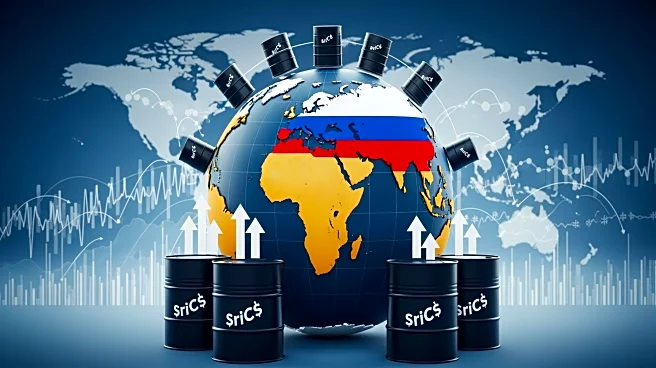What's Happening?
OPEC+ members, led by Saudi Arabia, have begun to unwind their voluntary production cuts, increasing oil supply from the Middle East. This move has shifted the balance in the oil markets, with a growing
share of Middle Eastern oil being exported to Asia. The increase in supply has positively impacted the Very Large Crude Carrier (VLCC) market, as more crude oil is now available for export. The VLCC segment is particularly responsive to Middle East oil flows, with 85% of crude and condensate from the region being carried by these vessels.
Why It's Important?
The increase in Middle Eastern oil supply is significant for the global oil and tanker markets. It signals a shift in the dynamics of oil supply, with the Middle East reasserting its role as a key driver of VLCC demand. This development is likely to support sustained demand for VLCCs, providing stability to the freight market. The move also reflects a strategic decision by OPEC+ to prioritize exports, which could influence global oil prices and trade patterns.
What's Next?
The VLCC market is expected to continue benefiting from the increased Middle Eastern supply, with Asia remaining a key demand center. However, geopolitical risks in the Middle East and potential changes in OPEC+ strategy could impact market dynamics. The limited growth in the VLCC fleet size suggests that demand will continue to drive the market, but any downturn in Asian refining margins could temper cargo intake.
Beyond the Headlines
The reintroduction of Middle Eastern oil supply highlights the region's strategic importance in global energy markets. It underscores the interconnectedness of global trade and the potential for geopolitical events to influence market dynamics. The situation also raises questions about the long-term sustainability of current production levels and the potential environmental impacts of increased oil transport.












